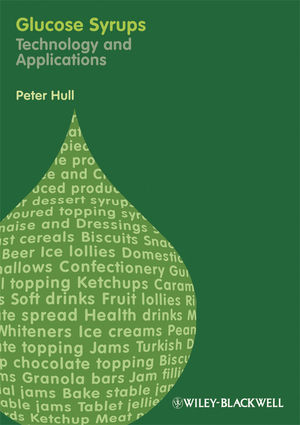Glucose Syrups: Technology and ApplicationsISBN: 978-1-4051-7556-2
Hardcover
388 pages
March 2010, Wiley-Blackwell
 This is a Print-on-Demand title. It will be printed specifically to fill your order. Please allow an additional 10-15 days delivery time. The book is not returnable.
|
||||||
Connect with Wiley Publicity
Author Interview: Peter Hull, Glucose Syrups: Technology and Applications
1. How important is the use of glucose syrups to food production and modern industry?
One has only got to look at the ingredients declaration panel on any manufactured food to see that glucose syrups are in a lot of foods – jams, confectionery, bread and cakes, soft drinks and health drinks, tomato and similar sauces, breakfast cereals, health bars and ice creams to mention just a few. They are also used in the brewing of beer and lagers, also in the manufacture of antibiotics, vitamin C (ascorbic acid), thickeners and sweeteners for sugar free products, the list is endless .
Glucose syrups are used in industry for example in the production of ingredients for use in oil well drilling muds, and in the sizing of glass fibre insulation. Basically, glucose syrups are a very versatile product.
2. Considering how useful these syrups now are, were they truly first discovered by accident?
There is a lot of confusion and misunderstanding about the origin of glucose syrups. Glucose syrups were first produced in 1811.At that time Napoleon Bonaparte was at war with most of Europe, and the Royal Navy blockaded French ports, preventing sugar from French colonies reaching France. As an alternative to sugar, the French used honey, which caused a European shortage of honey.
Honey, at that time, was used in the gilding of porcelain and in St Petersburg, Russia, there was a thriving porcelain industry, but due to the shortage of honey an alternative had to be found. Working in St Petersburg at that time on the analysis of geological minerals was a German chemist called Konstantin Kirchoff, and I believe that the industry turned to him to find an alternative to honey. Kirchoff was certainly not a food scientist, and the fact that he produced an alternative product which was sweet, was purely fortuitous.
Some might say that the origin of glucose could be compared to the use of Viagra, - both glucose syrup and Viagra were developed for one particular application, but found to be far more successful in another. In the case of Viagra, this was developed as a heart drug, but its side effects were more successful, similarly the sweetness of glucose was of greater interest in food manufacture than in the gilding of porcelain.
3. How has the glucose industry developed over the 40 years covered in your book?
There were two major developments. The first was the introduction of fructose syrups. One problem which the glucose industry had for many years was that none of its syrups had the same sweetness as sugar at a similar price. Whilst fructose, which is sweeter than sugar, was available it was expensive. The advent of fructose syrups, changed all that and opened up new markets, particularly in soft drinks.
The second development was the involvement of the EU in the food industry as a direct result of the success of fructose syrups. Because fructose syrups was being used to replace sugar in a lot of food products, this meant that there was the possibility that the European beet sugar producers could go out of business, - which would have been politically unacceptable, therefore a production quota was introduced. A similar quota tactic was imposed on fructose produced from chicory. Whilst the rest of the World has embraced the use of fructose syrups, in Europe its full utilisation has been stifled by bureaucracy.
4. How has the book been designed to be a practical guide for glucose scientists?
This book has been based on my experience as both a process development and as an application chemist, answering questions from process engineers producing glucose syrups and from the customers, therefore chemistry has been kept to a minimum.
The book explains the origin of glucose syrups, the intricacies of the Isoglucose quota system, how syrups are produced, their properties and hence which syrup is suitable for which application. There is also a comprehensive glossary of terms used by both the glucose industry and its customers, as well as some basic calculations.
5. Having spent so long in the industry, what advice would you give to new glucose students?
If you are working in the food industry, understand the properties of glucose syrups. This will enable you to decide if a syrup is suitable for your project and which one to use. If you are working outside the food industry, consider the potential of syrups as a starting material to replace oil based products, such as in plastics, using fermentation techniques, or in detergents by chemical modification. Finally, consider making syrups from waste cellulose e.g. waste paper and card board, instead of starch for these types of applications.
If you would be interested in reviewing Glucose Syrups: Technology and Application or you know a colleague who would, please contact Ben Norman on [email protected] or +44 (0)1243 770 375



